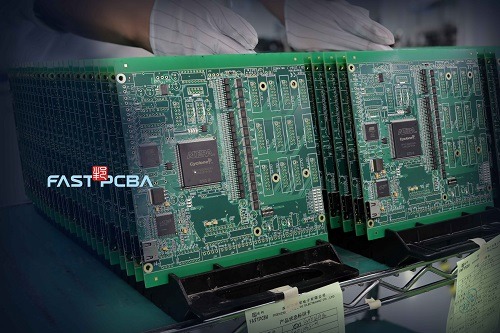About us
FASTPCBA Co.,Ltd
-
 Building 1, Senyang Electronic Technology Park, Guangming High-tech Park, Yutang Street, Guangming District, Shenzhen City.
Building 1, Senyang Electronic Technology Park, Guangming High-tech Park, Yutang Street, Guangming District, Shenzhen City.
-
 F:86-13418481618
F:86-13418481618
-
 pcba13@fastpcba.cn
pcba13@fastpcba.cn
 date:2019-12-19 10:44:43
date:2019-12-19 10:44:43
How to choose lead-free PCB manufacturing material and pad coating
The choice of lead-free PCB manufacturing materials must consider the compatibility between high temperature and PCB materials.High temperatures will cause thermal deformation of the PCB and damage the components in severe cases: high temperatures will also cause the polymer to age and deteriorate, making the PCB mechanical strength and electrical performance is degraded.

When selecting lead-free PCB pad coatings, the compatibility of solder and PCB pad coatings must be considered.
(1) Requirements for lead-free PCB materials
The main requirements of the lead-free process for PCB materials are high temperature resistance, high glass transition temperature, low thermal expansion coefficient, high PCB decomposition temperature, high heat resistance, low water absorption of PCB, low cost, other electrical properties such as dielectric constant , dielectric loss, anti-electrical strength, insulation resistance, etc. must meet product requirements
(2) How to choose a lead-free PCB material
In addition to satisfying the same conditions as leaded products, the choice of lead-free PCB materials must also consider the compatibility of high temperature and PCB materials. The more complex the product, the more layers, the larger the PCB size, the larger the component size, and the higher the quality of the assembly board, the higher the soldering temperature.
A. Select PCB according to product function, performance index and product grade.
B. For general lead-free electronic products, use FR4 epoxy glass fiber substrate
C. Complex lead-free electronic products can choose FR-4 with high Tg, (150-170 ℃).
D. High reliability and thick plate adopt FR-5.
E. Considering low-cost lead-free electronics, CEM-1 and CEM-3 can be selected.
F. For high temperature or flexible circuit boards, use polyimide glass fiber substrate
G. For high reliability circuit boards with high heat dissipation requirements, metal substrates are used.
H. For high-frequency circuits, a Teflon glass fiber substrate is required.
(3) How to choose lead-free PCB pad coating.
In the traditional Pb-Sn process, the compatibility between Pb-Sn hot air leveling (HASL) and solder is the best, and it is also the best choice from the aspects of interface connection reliability, soldering process, and cost. But with the need for high-density, narrow-pitch technology, the use of micro-pitch components and micro-BGA devices is increasing, and the biggest disadvantage of HASL is that the surface is uneven (some places are not thick enough, and some are too thick) Therefore, long before the lead-free boom to come, high-density assembly, such as the application of assembly board processes such as 0201.μBGA, did not use HASL, but instead used a lead-free surface treatment process-protected with organic solderability Film (OSP), electroless nickel plating (ENIG), and immersion silver instead of Pb-Sn hot air leveling (HASL). These surface treatment processes have their own advantages and disadvantages.
In the realization of lead-free, the choice of PCB surface plating directly affects assembly quality, reliability and cost of electronic products.
 Building 1, Senyang Electronic Technology Park, Guangming High-tech Park, Yutang Street, Guangming District, Shenzhen City.
Building 1, Senyang Electronic Technology Park, Guangming High-tech Park, Yutang Street, Guangming District, Shenzhen City.
 F:86-13418481618
F:86-13418481618
 pcba13@fastpcba.cn
pcba13@fastpcba.cn